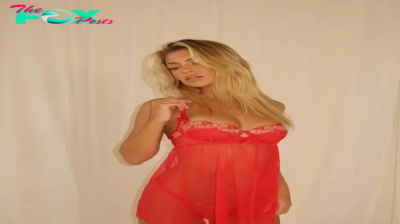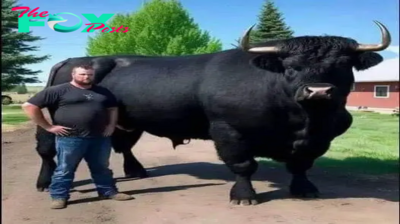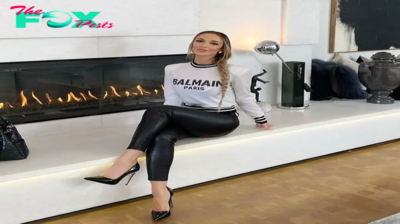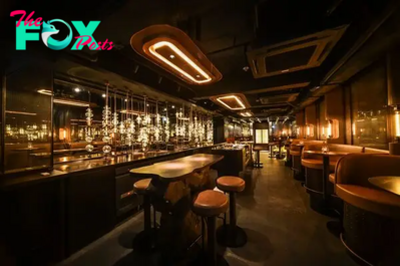Lifestyle
Washington Wines: Reaching Great Heights
Despite the challenges they’ve faced since 2020, leading producers in America’s Washington state are making better wines than ever, writes CLAIRE NESBITT for JamesSuckling.com.
It’s been a roller-coaster ride for Washington’s grape growers and winemakers since the turn of the decade. The past four years have seen challenge after challenge: a global pandemic plus wildfire smoke in 2020, the hottest growing season in recent History in 2021, followed by the coolest season in a decade, and a damaging winter freeze in January this year. That’s not to mention concerns in Washington’s grape-growing industry, with news of a reduction of 40 percent of grower contracts by the state’s largest winery.

Leading producers are nonetheless making better wines than ever, and the 15 we recently spoke to in chilly Seattle and the eastern growing areas of Walla Walla and Red Mountain expressed resilience in the face of unpredictability. Of the 669 wines my colleague Jim Gordon and I tasted for this year’s Washington report, we rated 80 at 95 points or higher with only 6 percent receiving scores of less than 90.
Most wines we tasted were from 2021, which was one of the hottest growing seasons on record, according to winemakers we spoke to, with very low yields and a heat spike in late June that stressed the vines.
“The heat dome delayed some varieties like merlot and cabernet franc,” said Alex Stewart, the winemaker at Woodinville-based Matthews, referring to the phenomenon in which hot weather is “trapped” in a region because of stationary high-pressure conditions. Other producers we spoke to explained that the heat dome, which occurred early in the season, required growers to be more careful with irrigation and canopy management, though they added that the vines were able to recover and continue fruit development.
Paul Golitzin, the owner of Quilceda Creek in Snohomish, said the harvest was very early, compressed from a typical four-week process to under three weeks across its vineyards in the Columbia Valley. Despite these stressors, their pure cabernet sauvignon bottlings are the best we’ve tasted, contrary to what might be expected from a “fast and furious” harvest. Golitzin described them as “opulent and flashy”.
The Quilceda Creek Cabernet Sauvignon Horse Heaven Hills Tchelistcheff 2021 tops our report with a near-perfect score. It’s concentrated, dark-fruited and savoury, opulent but balanced, with fruit coming from own-rooted vines grown in a warm amphitheatre – the estate-owned Mach One Vineyard overlooking the Columbia River. Quilceda Creek’s three other pure 2021 cabernet sauvignons – Palengat, Galitzine and its Columbia Valley blend – are also standout bottlings of immense structure and concentration.
Walla Walla-based wineries Leonetti Cellar, Figgins and L’Ecole No 41 once again produced some of the highest-rated Bordeaux-style reds in this report, from an elegant and composed pure cabernet sauvignon, the Leonetti Serra Pedace Vineyard 2021, to the complex blend Loess 2021, alongside the concentrated Figgins Estate Red 2021 and L’Ecole No 41’s tightly wound Ferguson Vineyard 2021.

They’re joined this year by a newcomer, Dossier, which is also based in Walla Walla Valley, a stone’s throw from the Washington-Oregon border. We were most impressed with two of its highest-tier “Reserve” wines from the inaugural 2021 vintage. The cabernet-led Halo Reserve Dissertation Red Blend 2021 and the Cabernet Sauvignon Columbia Valley Halo Reserve 2021 show sophistication, intensity and elegance. Both are blends of top vineyards like Red Mountain AVA’s Ciel du Cheval “to bring in different aspects from all over Washington”, according to winemaker Billo Naravane.
Cabernet sauvignon is the leading variety by area in the state, at just over a third of all plantings, and that was similarly reflected in our tastings. And yet year after year we find that syrah has a disproportionately high representation at the top level.
The Cayuse Vineyards Bionic Frog is consistently one of the best syrahs in the United States, with the 2021 bottling one of its finest. It’s aromatically explosive, with a distinct briny, peppery and savoury quality that’s a hallmark of wines from the Rocks District, an area with extraordinarily stony soils in Walla Walla Valley, where owner Christophe Baron was the first to plant vines in 1997.
Another one of Baron’s projects under the Bionic Wines umbrella is the Hors Categorie Syrah Walla Walla Valley 2021, a firmer and more powerful rendition of syrah from grapes grown on a steep, higher-elevation site in the valley.
And check out the other Cayuse 2021 syrahs from Cailloux Vineyard, En Cerise Vineyard and En Chamberlin Vineyard, as well as Baron’s Horsepower wines, which are produced from vineyards worked entirely by horses. All his wines are made from biodynamically grown grapes and, aside from Hors Categorie, hail from “the stones”, as Baron likes to call the Rocks District.
Made in a converted Dr Pepper bottling plant in Seattle by House of Smith winemaker Brennon Leighton, the wines make an impression on us each year. The electric, savoury and immensely long K Vintners Syrah Yakima Valley Motor City Kitty 2021 comPetes at the top of this report with the Bionic Frog, slapping the nostrils with aromas of tapenade, volcanic ash, tea leaves and green peppercorns. Leighton’s reductive winemaking style is as discernible here as it is in his other K Vintner 2021 syrahs, such as Royal City, Powerline Estate, The Beautiful, The Hidden and Phil Lane. All are energetic wines priced from US$40 to $150.

Only three percent of our tastings were grenache, making it remarkable that three feature in the top 20 wines of this report. On par with the best syrahs is K Vintners’ The Boy 2021, a mouth-filling wine combining red fruit and spice, blanketed in soft tannins. Two more stunning wines are the effusive and funky Cayuse Vineyards God Only Knows 2021, made mostly from grenache (the exact blend? God only knows) and the salty, savoury Horsepower Grenache Fiddleneck Vineyard 2021.
18 percent of our tastings were white wines. We found some serious sauvignon blancs, such as Dossier’s Halo Reserve, and Rhone white varietals, such as the intensely flavourful Delmas Viognier Walla Walla Valley 2021, which I tasted standing next to heaps of large, smooth stones – the Rocks – in its SJR vineyard. The honeysuckle, wild peach and aniseed aromas leapt out of the glass even in the bitingly cold February air.
Excellent chardonnays are also produced from cooler sites across the Columbia Valley. Our highest-rated white wine this year is the Sixto Chardonnay Moxee 2021. It’s generous, creamy and firmly balanced, made from 60-year-old vines at an elevation of 450 metres in the Columbia Valley, and sells for just $55 a bottle.
The wines from Washington are, on average, supremely affordable compared with neighbouring Oregon, at $17 and $11 respectively, reflecting a much lower average price of grapes. While this may mean fantastic value for consumers, there are question marks for the future of grape growing in the state. Last summer, Chateau Ste Michelle, by far the largest producer in Washington, announced it would reduce its fruit contracts with growers by 40 percent over the next five years.
“I think it will improve the wine quality as a whole across the region,” said Katie Nelson, the vice president of winemaking at Chateau Ste Michelle, who clarified the move as a strategic overall reduction to bring supply and demand back into balance.
Oversupply of vineyards appears to be a national issue, according to Silicon Valley Bank’s 2024 State of the US Wine Industry Report. But because Chateau Ste Michelle’s wineries produce close to 50 percent of all Washington wine, its struggles and strategic decisions have put Washington in the spotlight. I was told by multiple winemakers that though growers have been selling more to smaller wineries, the state is now technically overplanted.
“We’re seeing positive and negative effects,” said Betz winemaker Louis Skinner. “There are more wine grapes now than we’ve ever seen at every quality level. But we also see growers cutting out vines. Most growers wouldn’t carry a crop all the way to the end of season not having someone take it.”
What does this mean for wine quality and wine price? Several winemakers we spoke to see the opportunity for small- to medium-sized wineries to buy fruit, which may lead to an eventual adjustment from high-volume wines to a greater focus on premium wines.
“It gives Washington a chance to redefine itself,” said Andrew Latta, owner and winemaker of Latta Wines in Seattle. “There’s a little bit of a vacuum out there and opportunity for growth. It’s unfortunate [for growers], but it does open a lot of markets for medium-sized brands to grow and expand, maybe to break out of the Pacific Northwest.”

New quality-focused producers such as Dossier and more ambitious winemaking at established wineries like Matthews, to which ex-Quilceda Creek winemakers Alex Stewart and Hal Iverson moved in 2021, have certainly given plenty of wine for thought. There’s also continued investment in areas like Walla Walla Valley’s Rocks District, which has seen “insane growth in the last five years”, according to Boursier, as well as new vineyards at higher elevations.
Weathereye vineyard, for instance, sits atop Red Mountain, with plantings climbing above 400 metres in elevation and continuing beyond the border of the AVA such that most of the wines are labelled as Columbia Valley. Standing midway up Red Mountain, I could see the first few rows of vines stretching up until they disappeared behind the ridge. Plantings on this extreme site only began in 2016, but we were impressed by the concentration and quality of the wines that we tasted.
“It’s remarkable,” Latta said of the Weathereye vineyard. “It’s an extreme and windy site and it keeps the acid in the fruit.” His inaugural syrah from Weathereye, the Piece 2020, is produced from four-year-old vines but already shows a massive concentration of black fruit married to vibrant acidity and a powerful tannin frame.
Wines from the 2022 vintage make up 18 percent of this report. It was a long, cool growing season – more like 2012 and 2013, according to Elizabeth Boursier – with a warm October giving the grapes much-needed hang time to ripen. The latest releases are mostly white wines, the most impressive by some margin being Dossier’s spicy, aromatically complex Sauvignon Blanc Halo Reserve 2022.
Regardless of the challenges faced by growers and winemakers, the wines in the list below speak of Washington’s
ability to produce high-quality wines with character. And with the diversity – of varieties, terroir and winemaking – seemingly of a country rather than a state, we have no doubt they’ll continue to climb to even greater heights.
Here are five Washington wines to consider
CAYUSE VINEYARDS SYRAH WALLA WALLA VALLEY BIONIC FROG 2021
99 POINTS
This comically named but serious flagship wine of Cayuse comes from the Coccinelle vineyard, planted in 1998. It practically explodes in aroma.
K VINTNERS GRENACHE WALLA WALLA VALLEY THE BOY 2021
99 points
Super smooth and mouth-filling, but also lacy and filigreed, the wine combines powerful, broad and ripe strawberries, red plums and cedar on a full body.
K VINTNERS SYRAH YAKIMA VALLEY MOTOR CITY KITTY 2021
99 points
It’s electric on the palate, so savoury, so earthy and so minerally, with stemmy and tea-like tannins. The freshness and energy are astounding.
QUILCEDA CREEK CABERNET SAUVIGNON HORSE HEAVEN HILLS TCHELISTCHEFF 2021
99 points
A savoury, woodsy, tobacco-like aroma leads to luxurious, concentrated and layered black cherries, black olives and graphite on generous, firm tannins that shape it and will help it age for a long time.
HORS CATEGORIE SYRAH WALLA WALLA VALLEY 2021
98 POINTS
Deep and intense syrah with compelling aromas of rich blue and black fruit, rust, ash, bay leaves, cracked pepper, crushed rock and grilled meat. It’s firm, full-bodied and powerful.
(Header image: Vines in Benton City Washington (Image: Getty))
-

 Lifestyle44m ago
Lifestyle44m agoSave up to hundreds on Kelly Clarkson Home at Wayfair’s massive Way Day sale
-

 Lifestyle44m ago
Lifestyle44m agoAir fryers to coffee makers: Shop celeb-approved kitchen staples on sale at Wayfair’s Way Day
-

 Lifestyle2h ago
Lifestyle2h agof.The tenderly affectionate couple looked at their palm-sized baby with pure joy.f
-

 Lifestyle2h ago
Lifestyle2h agoSE “Enchanting Innocence: The Baby with a Fairy Tale Princess’s Aura”
-

 Lifestyle3h ago
Lifestyle3h agoHappy Birthday, July: A Wish for Everlasting Joy and Innocence
-

 Lifestyle3h ago
Lifestyle3h agoThe enchanting and seductive beauty of muse Lily Rowland in golden lingerie makes everyone fascinated
-

 Lifestyle3h ago
Lifestyle3h agoLily Rowland radiates confidence in a stunning swimsuit with her natural beauty
-

 Lifestyle4h ago
Lifestyle4h agoI recently spent $6,500 on this registered Black Angus bull



























